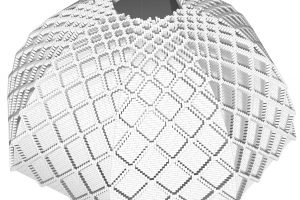
The Brunelleschi herringbone pattern was certainly known by the Sangallo in the 16th century, who developed their own self-balanced construction technology for masonry domes based on the cross-herringbone spiraling pattern. Such technology was used for over one century in Italy to build masonry domes without shoring and formwork. However today it is not well known how this cross-herringbone spiraling pattern enables equilibrium states of self-balancing masonry domes. Therefore, in this study we demonstrate how this pattern permits equilibrium states of an octagonal masonry dome using two analysis approaches (i.e. Discrete Element Model and Limit State Analysis). The Discrete Element Model analysis has been performed to show the existence of the plate-bande resistance within the pattern. Even in the construction stages, these plate-bande resistance systems are capable of preventing sliding and overturning of the masonry dome. With the global self-balanced static equilibrium state proven, a Limit State Analysis is then adopted to estimate a possible thrust configuration needed to achieve equilibrium of the plate-bandes and the whole dome at each construction stage. It is shown that the value of the mortar friction has little influence on the static behavior of the dome. The study of the cross herringbone spiraling pattern does not merely serve historical or conservation purposes. It has practical application for the development of dry self-balanced robotic masonry construction technologies, particularly suited for unmanned aerial vehicles.